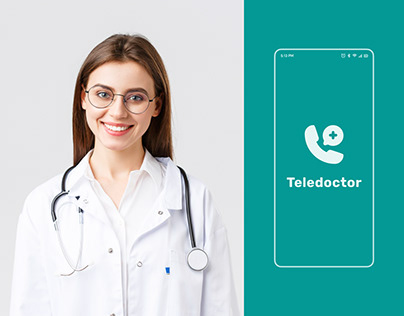Teledoctors: Budget-friendly and Available Medical Care Solutions
Teledoctors: Budget-friendly and Available Medical Care Solutions
Blog Article
Discovering the Conveniences and Obstacles of Teledoctors in Modern Health Care
As the medical care landscape progresses, teledoctors have arised as a critical part in bridging voids in medical accessibility and effectiveness. Just how can the health care industry balance these advantages with the fundamental challenges?
Expanding Accessibility to Care
Telemedicine has become a critical technology in contemporary healthcare, dramatically broadening accessibility to take care of varied populations. By leveraging electronic innovation, teledoctors have actually transformed the traditional medical care delivery version, making it possible for people in remote or underserved areas to get timely medical assessment. This advancement is especially helpful for individuals residing in rural areas, where the shortage of healthcare centers and specialists typically causes delayed or insufficient therapy.
Teledoctors contribute in connecting the void created by geographical obstacles. Through virtual assessments, individuals can access a wide variety of health care services without the requirement for extensive travel. This is especially useful for those with flexibility problems or chronic conditions requiring constant medical focus. Moreover, telemedicine enhances connection of care by allowing normal follow-ups and tracking, thus boosting patient outcomes.
The integration of teledoctors right into health care systems additionally supports the monitoring of public health situations by assisting in rapid reaction and triage. Throughout pandemics, for circumstances, virtual appointments minimize the burden on physical medical care facilities, reducing exposure risks for both individuals and doctor. As telemedicine proceeds to evolve, it guarantees to reshape the landscape of medical care availability, making it more effective and inclusive.
Cost-Effectiveness of Teledoctors
The cost-effectiveness of teledoctors is a substantial factor driving their prevalent adoption in medical care systems. By reducing the demand for physical facilities and in-person brows through, teledoctors offer an even more budget friendly alternative to traditional healthcare distribution.
Furthermore, teledoctors promote an extra reliable use healthcare sources by reducing unneeded emergency room sees and medical facility admissions. Individuals can access prompt examinations for minor ailments or follow-up treatment, which aids to alleviate the problem on overstretched healthcare centers. This performance not just leads to set you back savings for healthcare companies but additionally decreases the financial pressure on people that might or else face expensive medical facility expenses.
In addition, teledoctors can assist in handling chronic conditions much more properly by giving constant surveillance and prompt interventions. This aggressive approach can stop complications, thus reducing long-lasting therapy costs. Generally, teledoctors offer a feasible solution to the escalating expenses of medical care, while keeping high quality care delivery.
Enhancing Client Convenience
While cost-effectiveness plays a crucial duty in the surge of teledoctors, improving person benefit stands as an additional compelling advantage of this healthcare model. With the integration of teledoctors, patients can bypass the traditionally taxing process of scheduling and attending in-person appointments.
Moreover, teledoctors provide versatile scheduling, allowing clients to prepare consultations sometimes that best match their personal and specialist dedications. This flexibility is very useful for individuals balancing demanding job schedules or household duties, guaranteeing that healthcare can be integrated seamlessly into their lives. Additionally, the ability to gain access to physician from the comfort of one's home can cause increased patient involvement and adherence to therapy strategies, as the obstacles to looking for treatment are lowered.
The comfort offered by teledoctors not only enhances the person experience however additionally adds to an extra reliable check here and responsive health care distribution system, inevitably sustaining far better wellness end results.
Attending To Personal Privacy Worries
Amidst the expanding adoption of teledoctors, privacy issues emerge as a considerable consideration. As medical care increasingly depends on digital systems, ensuring the privacy of patient information ends up being vital. The digitization of clinical documents and making use of telecommunication innovations require durable security measures to secure sensitive data from unapproved access and violations.
Medical care service providers should stick to stringent guidelines, such as the Medical Insurance Portability and Responsibility Act (HIPAA) in the United States, which establishes nationwide standards for safeguarding clinical info. Compliance with such laws is critical in keeping patient trust and ensuring their information is handled properly. Encryption of information, protected interaction networks, and regular audits are some of the measures that can be applied to boost information security.
Regardless of these steps, challenges continue. Cybersecurity risks are developing, and medical care companies must remain alert to new vulnerabilities. Additionally, informing both clients and healthcare companies regarding finest methods in data privacy is important. This consists of comprehending the restrictions of data and the relevance of secure login qualifications. teledoctors.
As teledoctors end up being extra indispensable to medical care shipment, dealing with privacy concerns is necessary to make sure both the effectiveness and dependability of these solutions.

Browsing the Digital Split
Bridging the digital divide is a crucial challenge in the widespread adoption of teledoctors. The benefits of teledoctors-- such as enhanced availability and ease-- remain unreachable for several individuals who can most benefit from them.
Efforts to minimize this divide necessitate a multi-faceted technique. Policymakers have to focus on facilities growth to improve net accessibility in underserved locations. In addition, initiatives to subsidize technology for low-income homes can play a pivotal duty in ensuring equitable accessibility. Health care companies and community companies should team up to use electronic why not find out more literacy programs, encouraging patients to browse telehealth platforms with confidence. Furthermore, designing user-friendly user interfaces can better boost access for all demographics, particularly the elderly.

Conclusion
The combination of teledoctors right into modern-day health care offers significant advantages, consisting of enhanced access to care, cost-effectiveness, and improved individual ease. Nevertheless, difficulties such as personal privacy concerns, the electronic divide, and cybersecurity risks need to be dealt with to optimize these advantages. By carrying out durable data security actions, boosting electronic proficiency, and ensuring safe and secure technical infrastructure, the possibility of teledoctors can be totally recognized, look here promoting fair health care delivery and changing the health care experience for all individuals.

Report this page